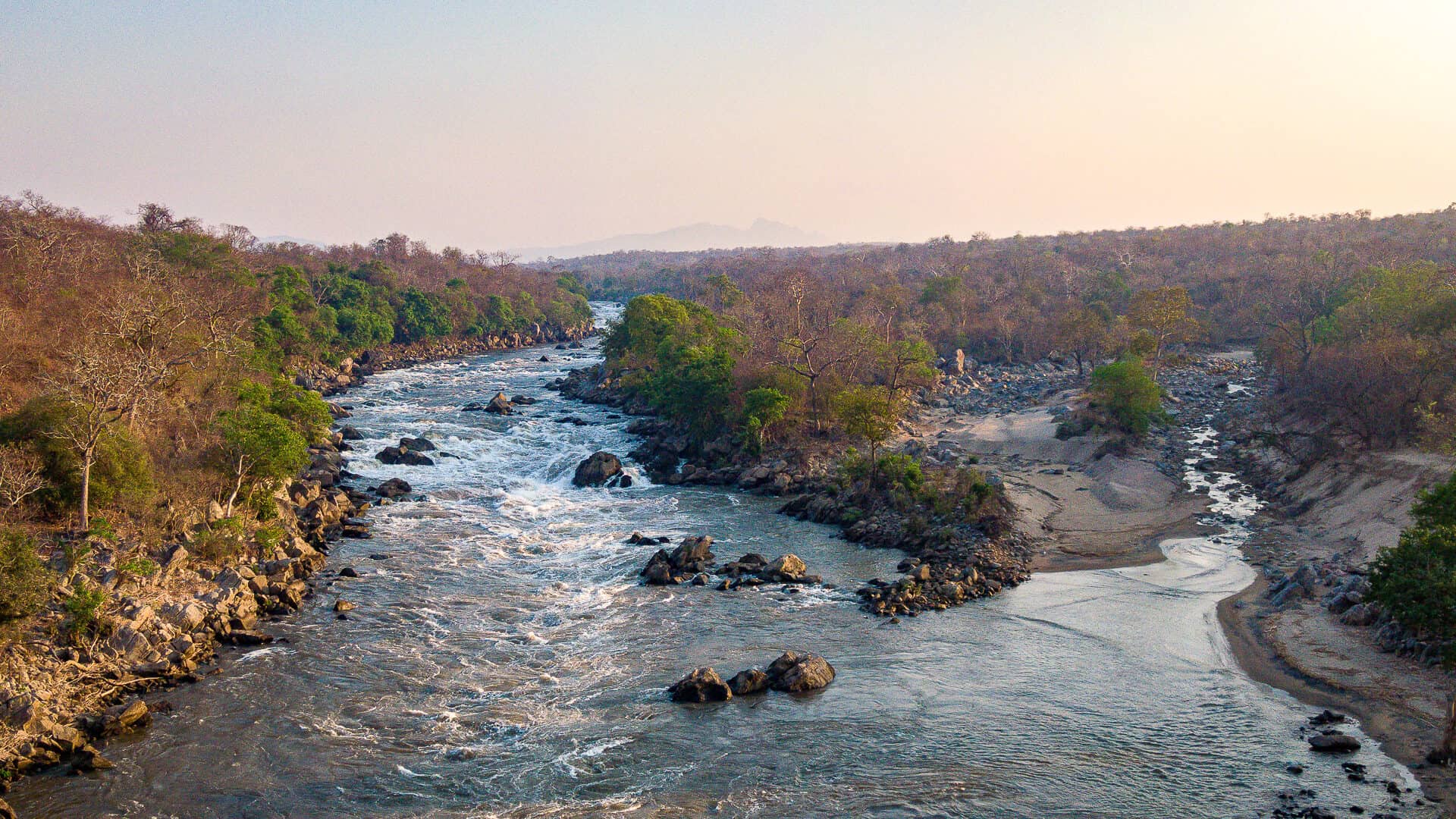Majete Wildlife Reserve is one of Africa’s most powerful stories of renewal. Set in Malawi’s southern lowlands and just a short transfer from Lake Malawi, this wild landscape was once silent. Decades of poaching had left it empty; lions, rhinos, and elephants were gone, and the forests felt hollow.
Today, Majete is alive and once again a big five safari destination. Elephants bathe in the Shire River while hippos wallow in the shallows. Lions patrol the woodlands, sable antelope graze the plains, and wild dogs move quietly through the bush. Overhead, fish eagles call, while flashes of colour from Böhm’s bee-eaters and racket-tailed rollers brighten the skies. Every sighting here carries weight, because each animal tells a story of return.
The revival began in 2003, when African Parks partnered with Malawi’s government and local communities. Species were slowly reintroduced, the land healed, and balance returned. Majete gives you the best chance of spotting all members of the Big Five on safari in Malawi.
For travellers, a safari in Majete is about more than sightings. It’s a chance to witness resilience in action, to feel the hum of life returning to a once-empty forest. Game drives, boat safaris, and guided walks bring you close to iconic wildlife while also revealing the smaller details that make this ecosystem unique.
Must-Visit Areas in Majete
Mabele Hill
For those who want to truly grasp the scale of Majete Wildlife Reserve, Mabele Hill is the place to go while on safari. The gentle climb winds through woodland alive with birdsong, opening up to sweeping views across the miombo forest and the Shire River below. From the summit, you may spot herds of elephants or buffalo moving quietly through the bush.
Majete Heritage Centre
Near the main entrance, the Majete Heritage Centre offers a powerful introduction to the park. This is where the story of Majete is told through thoughtful exhibits and displays that trace its journey from near-empty reserve to thriving sanctuary. Local staff and community members share their role in its revival as a safari destination, from anti-poaching patrols to education projects. Visiting here deepens your safari, grounding every wildlife sighting in the human commitment that made it possible.
Best Time to Visit Majete
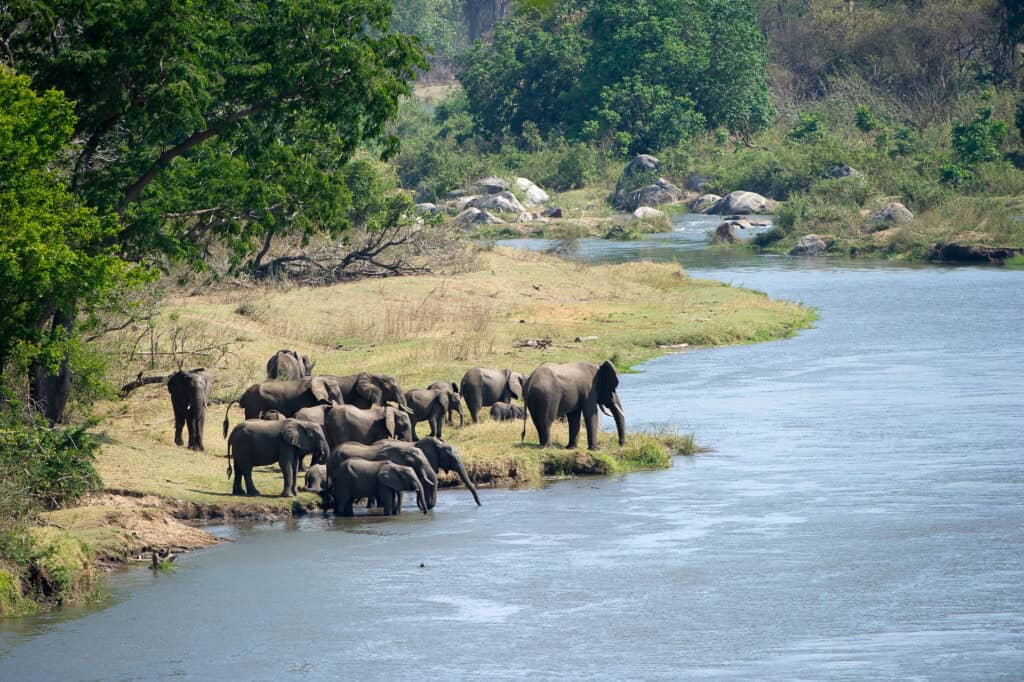
The dry season is the ideal time for a safari in Malawi. From May to October, wildlife gathers around rivers and waterholes in Majete, making sightings easier and more frequent. This is also the perfect time of the year to combine a Majete safari with a Lake Malawi trip.
October can be extremely hot, which some travellers may find challenging. From November to April, the rains transform the reserve into lush green landscapes alive with birdlife, though animals are more dispersed and some roads may become difficult to navigate. Some safari camps do close over the rainy season.
Wildlife in Majete
Majete’s greatest draw is its Big Five residents. Elephants cool themselves in the Shire River, leopards rasp at dusk, buffalo move heavily through the woodland, and the powerful roars of lions can be heard at night. Black rhinos, reintroduced and closely protected, once again leave their tracks in the dust.
But this is only the beginning. Cheetahs stalk the plains, African wild dogs hunt in packs, hippos wallow in quiet pools, and crocodiles bask along the riverbanks. Giraffes move elegantly across the savannah, zebras graze in small herds, and antelope abound – sable with their sweeping horns, roan with their noble stance, and waterbuck, kudu, and eland blending into the woodland. Look more closely and you may encounter the smaller, more elusive residents: a pangolin rustling at dusk, an aardvark shuffling across a track, or a side-striped jackal slipping into the bush.
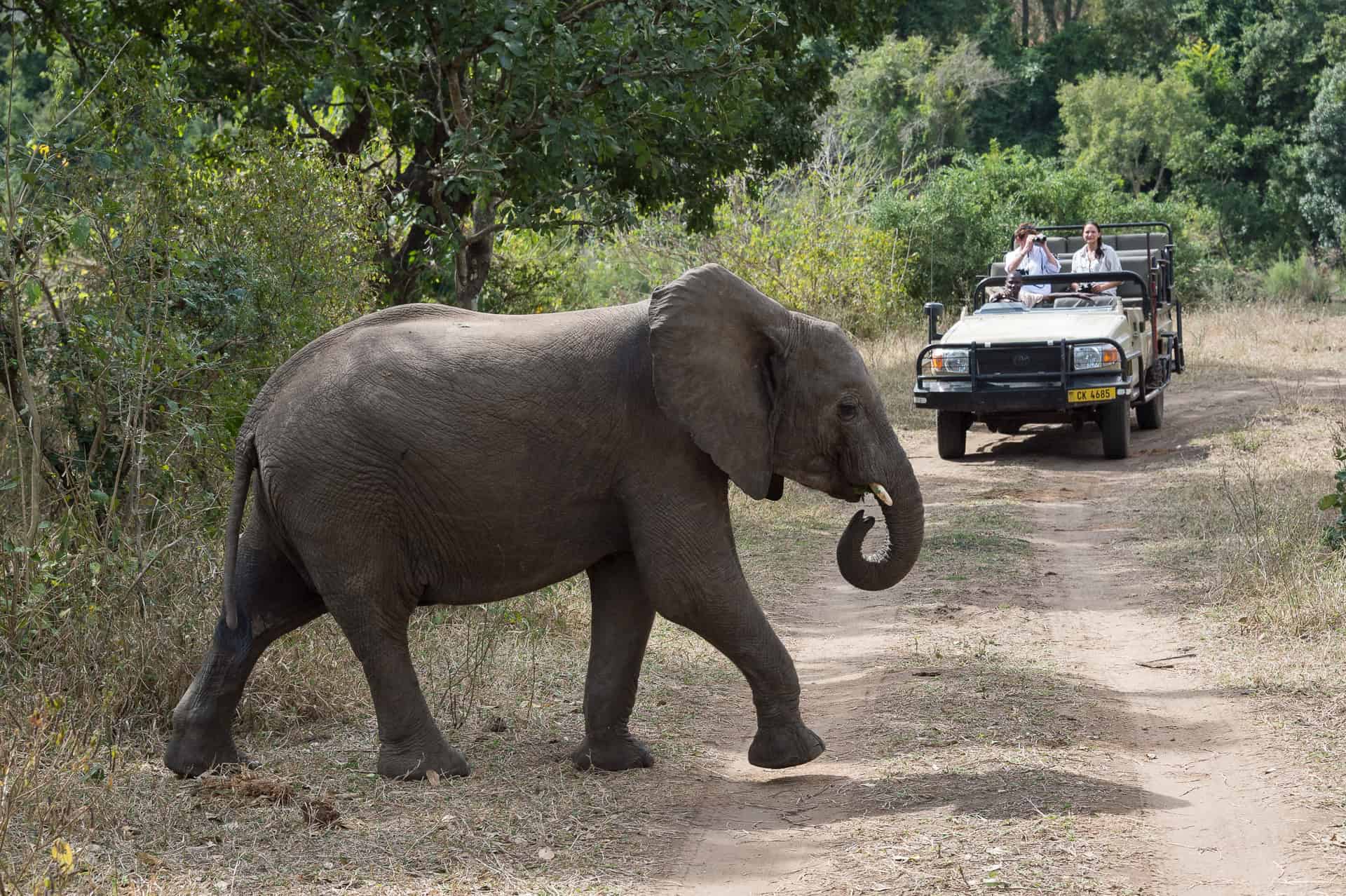
For birders, Majete is equally rewarding. With more than 300 recorded species, the reserve is alive with sound and colour. Highlights include the haunting call of the Pel’s fishing owl, the bright flash of Böhm’s bee-eater, the acrobatics of the racket-tailed roller, and the quieter charm of Arnot’s chat and Livingstone’s flycatcher.
It’s this mix of the iconic and the unexpected that makes Majete so compelling. One day might bring lions on the hunt, the next the quiet magic of sable antelope in golden light, or a roller flashing across the sky in a blaze of colour. Majete is a reserve where every encounter feels personal, authentic, and part of its remarkable story of revival.
Where is Majete and How to Get There
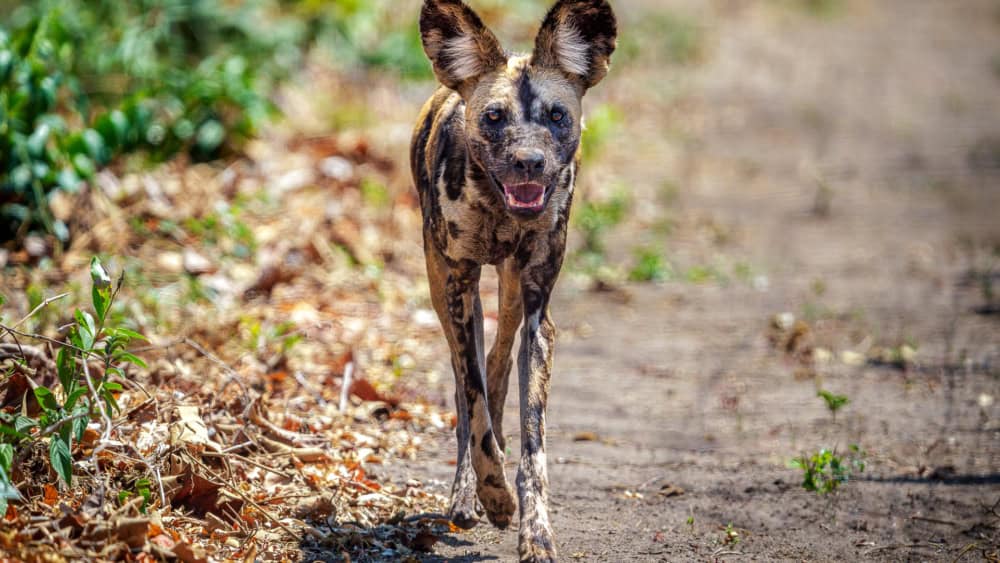
Majete Wildlife reserve is in the southwestern region of Malawi in the Lower Shire Valley. It’s close to the town of Blantyre, Malawi’s historic hub. With Discover Africa, private transfers are arranged from Blantyre (or another destination) to Majete, either by road or by air, ensuring a seamless and comfortable journey with time to enjoy the scenery. Along the way, you’ll pass rural villages, ancient baobab trees, and rolling plains, a fitting prelude to the wilderness ahead.
If you’re thinking about a safari and beach vacation, you may be wondering, “where is Lake Malawi relative to Majete?” To reduce travel time, your Malawi tour can include a light aircraft flight between the two destinations.
Why Majete Matters
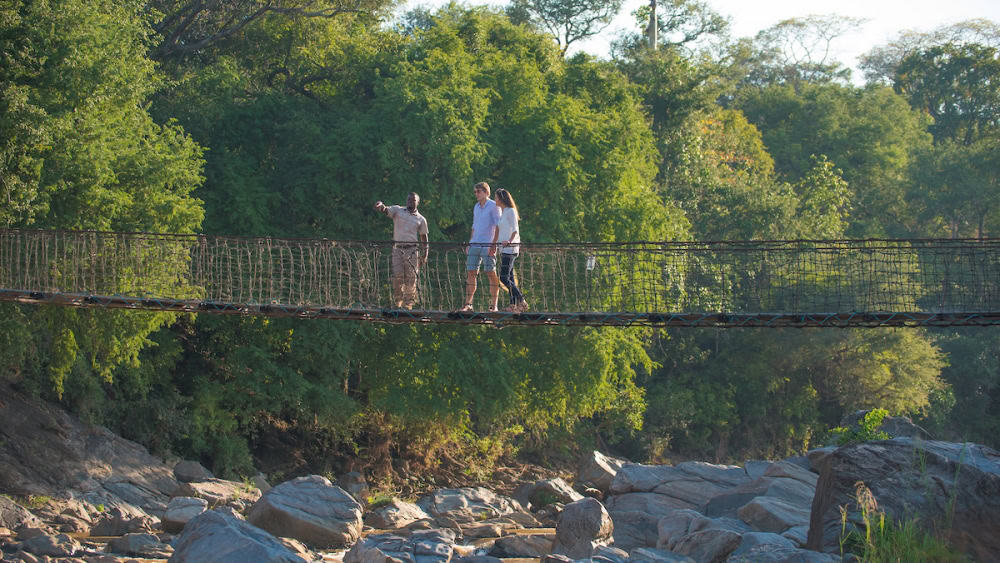
Among Malawi national parks, Majete stands apart. It’s a place where the scars of the past remain visible, yet so does the healing. Every lion’s roar and every elephant footprint is a reminder of resilience, of communities working hand in hand with conservation initiatives, and of hope restored.
This reserve has always been part of the human story as much as the wild one. And that is why Majete is more than a safari destination; it’s a sanctuary where travellers witness not only nature restored but also the promise of what is possible when people and wildlife thrive together.
With its close proximity to Lake Malawi, this is the perfect stop for the safari portion of a beach and bush combination holiday. Talk to us about your ideal escape, and let’s start planning your Malawi chapter.









